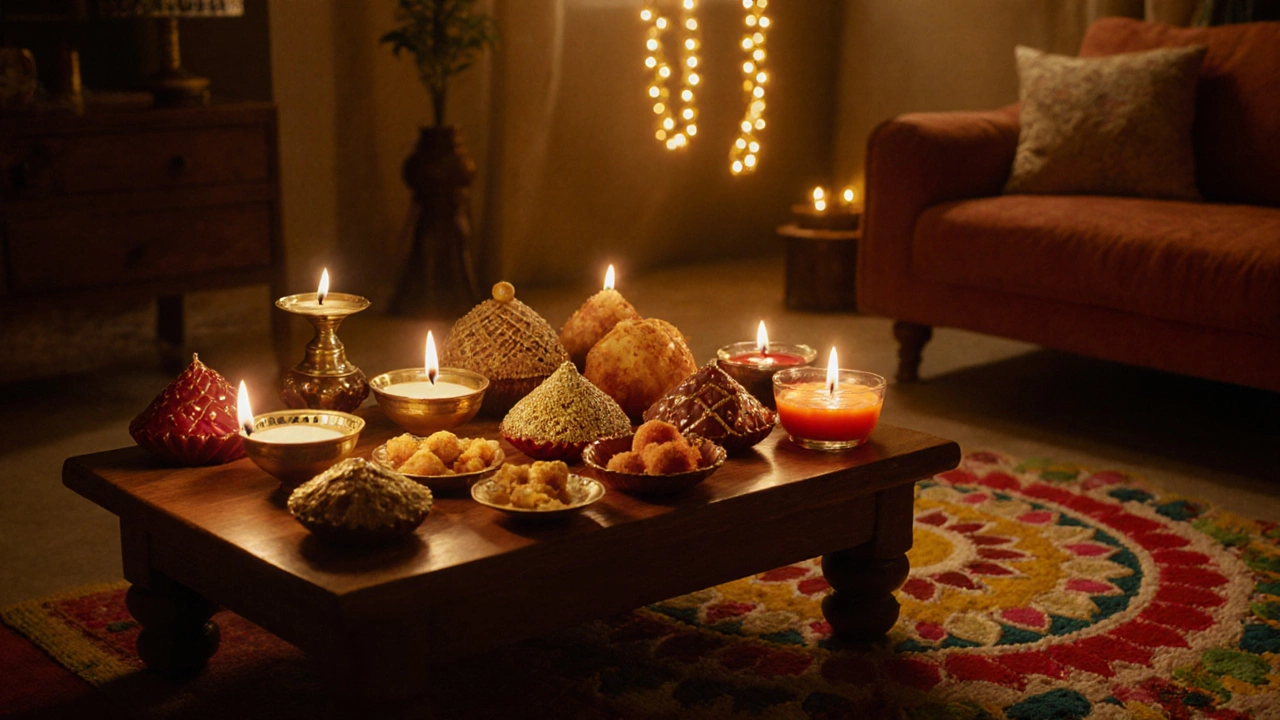
Why are sweets given during Diwali? Meaning and Traditions Explained
Discover the cultural and religious reasons behind gifting sweets on Diwali, explore regional treats, and learn tips for sharing the perfect festive sweets.
When people talk about Diwali, the Hindu festival of lights celebrated across India and beyond, marking the triumph of good over darkness. Also known as Deepavali, it's not just a single event—it's a cluster of rituals, stories, and local customs that vary from village to city, north to south. While many assume Diwali looks the same everywhere, the truth is deeper. In Tamil Nadu, for example, Diwali often blends with Karthigai Deepam, a traditional Tamil festival of lamps celebrated in the month of Karthigai, where oil lamps are lit on hills and doorsteps to honor the divine light of Shiva. These aren’t just similar celebrations—they’re overlapping traditions that show how culture adapts, not just copies.
What makes Diwali’s cultural significance so strong isn’t just the fireworks or the sweets. It’s the way it ties together family, memory, and meaning. For many, it’s the day when homes are cleaned not just physically, but spiritually—old grudges are let go, debts are settled, and new beginnings are welcomed. In northern India, it’s linked to Lord Rama’s return from exile. In Gujarat, it marks the new year. In Tamil communities, it’s often seen as the day Lord Krishna defeated the demon Narakasura, a story that carries its own weight in local poetry and temple songs. The Hindu festivals, a broad category including Diwali, Holi, and Navaratri, each with unique regional flavors and spiritual roots. Diwali stands out because it’s one of the few that crosses regional, linguistic, and even religious lines—Jains, Sikhs, and some Buddhists also observe it, each with their own story.
But here’s what most outsiders miss: Diwali’s power isn’t in its scale—it’s in its intimacy. It’s the mother lighting a lamp beside her child’s bed. It’s the uncle teaching his niece how to make rangoli with rice flour instead of colored powder. It’s the elderly woman in Madurai who still sings old Tamil verses while preparing sweets. These quiet moments are what keep the festival alive, long after the fireworks fade. And while global brands now sell Diwali-themed products, the real heart of the celebration lives in homes that don’t advertise it.
What you’ll find below are real stories and deep dives into how Diwali is lived—not just described. From how Tamil families blend it with their own customs, to why some communities don’t celebrate it the same way as others, to what the rituals actually mean beyond the surface. There’s no fluff here. Just clear, grounded insights from people who live it.

Discover the cultural and religious reasons behind gifting sweets on Diwali, explore regional treats, and learn tips for sharing the perfect festive sweets.